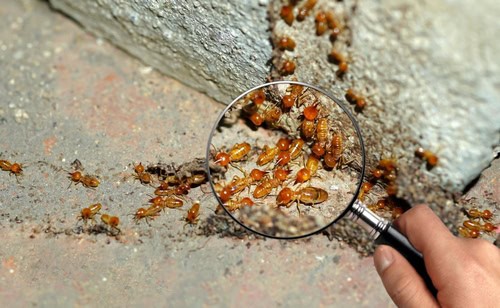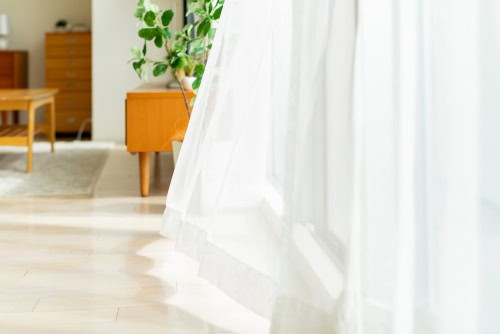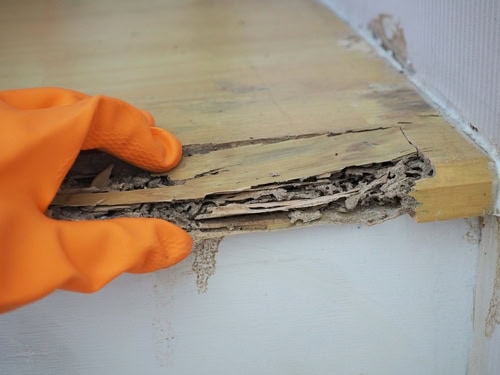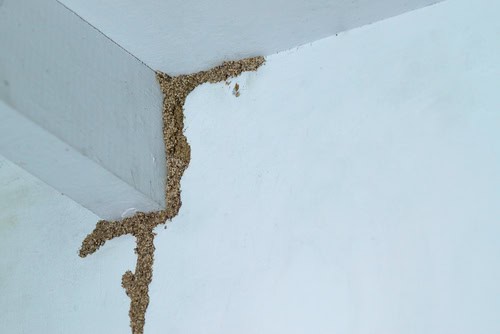
Termite Feeding Habits: What Do They Eat and Why?
August 14, 2023
Termite Control for HDB Flats: Preventing Structural Damage
October 2, 2023Reducing Humidity At Home to Prevent Termite

Reducing Humidity At Home to Prevent Termite
Reducing Humidity At Home to Prevent Termite. This comprehensive guide will delve into the critical aspects of maintaining proper ventilation and controlling indoor humidity to prevent termite attraction.
Termites are a significant threat to the structural integrity of your home and can cause extensive damage.
Understanding termite behavior and adopting effective ventilation and humidity control measures can safeguard your home from these destructive pests.
Read on – Reducing Humidity At Home to Prevent Termite:
Understanding Termite Behavior
Termites are highly attracted to environments with high humidity levels. These tiny, wood-destroying insects thrive in damp conditions, making homes with poor ventilation susceptible to infestations. Understanding this behavior is crucial in devising effective prevention strategies.
Identifying Signs of Humidity and Poor Ventilation
High humidity levels in your home can lead to visible signs such as mold growth, condensation on windows, and a musty odor.
Poor ventilation, on the other hand, can cause stagnant air and inadequate air circulation, further exacerbating the humidity issue.
The Dangers of Termite Infestations

Termite infestations can lead to severe structural damage, compromising your home’s foundation, walls, and wooden structures.
Additionally, termites can pose health risks, releasing airborne particles that may trigger allergies and respiratory problems.
Creating Effective Ventilation Systems
Consider opening windows strategically to create cross-ventilation to improve natural airflow within your home. Installing ventilation fans in key areas, such as the kitchen, bathroom, and basement, can also enhance air circulation and reduce humidity levels.
Controlling Indoor Humidity Levels
Monitoring indoor humidity using a hygrometer allows you to assess the moisture levels in your home accurately. Employing dehumidifiers can be beneficial in removing excess moisture from the air, especially in areas prone to high humidity.
Ventilation and Humidity in Specific Areas of the Home

Kitchen
To reduce humidity in the kitchen, use exhaust fans while cooking to remove steam and odors. Properly sealing any leaks in plumbing and keeping kitchen surfaces dry can further prevent moisture buildup.
Bathroom
Excess moisture in the bathroom can be prevented by using exhaust fans or opening windows after showering. Regularly checking for and repairing leaks in faucets and pipes is essential to maintain a dry environment.
Basement
Basements are particularly vulnerable to high humidity levels. Utilize a dehumidifier to keep the area dry and ensure that the basement is properly sealed to prevent moisture intrusion.
Landscaping for Termite Prevention
Landscaping plays a role in termite prevention. Opt for termite-resistant plants and maintain a distance between the plants and your home’s foundation.
Properly grading the land around your home ensures that water flows away from the foundation, reducing the risk of termite attraction.
Insulation and Termite Prevention

Proper insulation can contribute to humidity control. Choose insulation materials that are resistant to moisture and install them correctly to prevent water from seeping into your home’s walls.
Sealing and Waterproofing Measures
Inspect your home for cracks and gaps where termites can gain entry. Seal these openings with appropriate materials to create a barrier against termite infestations. Additionally, apply waterproofing solutions to vulnerable areas like basements and crawl spaces.
Roof and Attic Ventilation
A well-ventilated roof and attic help control indoor humidity and prevent termite infestations. Properly installed vents and fans allow for efficient air circulation, reducing the chances of moisture buildup.
Using Fans and Air Circulation Devices
Ceiling fans can significantly improve indoor air movement, assisting in humidity control. Additional air circulation devices, such as box or attic fans, can enhance ventilation.
Energy-Efficient Ventilation Solutions
Balancing effective ventilation with energy efficiency is crucial. Opt for energy-efficient ventilation systems that ensure a constant flow of fresh air without excessive energy consumption.
The Importance of Regular Maintenance

Regularly inspecting and maintaining your ventilation and humidity control systems is vital in preventing termite attraction. Address any issues promptly to avoid potential infestations.
Frequently Asked Questions (FAQs)
Q: What are the primary causes of high humidity in homes?
A: High humidity in homes can be caused by factors such as inadequate ventilation, water leaks, excessive moisture from daily activities like cooking and showering, and poorly insulated or sealed spaces.
Q: Can termites still infest my home despite good ventilation?
A: While good ventilation helps reduce termite attraction, it’s not a foolproof solution. Other preventive measures, such as landscaping, insulation, and regular maintenance, should also be implemented to minimize the risk of termite infestations.
Q: Are there natural remedies for reducing indoor humidity?
A: There are natural remedies, such as using moisture-absorbing materials like silica gel or houseplants that absorb excess moisture. However, these remedies may not be as effective as dedicated dehumidifiers in controlling indoor humidity.
Q: How can I assess the effectiveness of my home’s ventilation system?
A: You can assess the effectiveness of your ventilation system by monitoring indoor humidity levels, checking for condensation on windows and walls, and ensuring a consistent and comfortable airflow throughout your home.
Q: Is DIY termite prevention effective, or should I hire professionals?
A: While DIY termite prevention measures can be helpful, engaging professionals for a comprehensive inspection and prevention plan is recommended for the best results.
Reducing Humidity At Home to Prevent Termite – Conclusion

In conclusion, maintaining proper ventilation and controlling indoor humidity is crucial to preventing termite infestations.
Don’t wait for termites to invade; take action now to ensure a termite-free and secure living space for you and your family.
Preventing termite attraction requires a holistic approach that includes understanding termite behavior, implementing effective ventilation, and controlling indoor humidity.
You can create a termite-resistant home environment by following the guidelines in this ultimate guide.
Protect your home from the devastating effects of termite infestations. Implement the strategies discussed in this guide to maintain proper ventilation and control indoor humidity.
Contact us today for expert advice and assistance in safeguarding your home!




